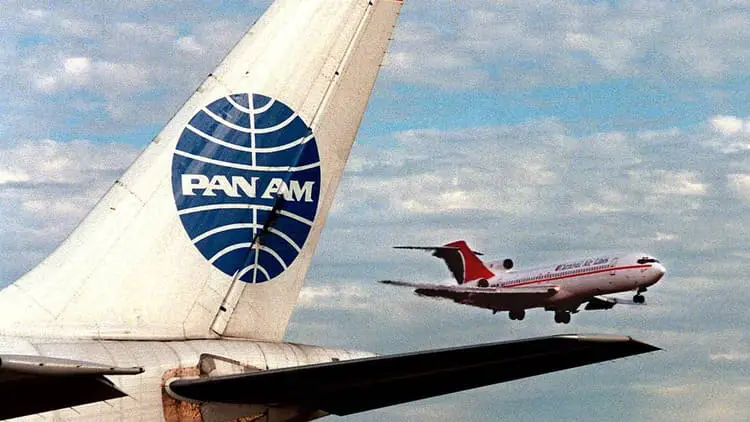
Remember the days when air travel felt like an event?
When you’d dress up, sip cocktails mid-flight, and feel like the journey itself was just as exciting as the destination? Back then, airlines like Pan Am, TWA, and Eastern ruled the skies, offering luxury, style, and service we can only dream about today.
But here’s the thing: those iconic airlines, the ones we all knew and loved, are gone. Have you ever wondered why?
What happened to the carriers that defined the golden age of flying? It’s not just nostalgia talking—these airlines shaped aviation as we know it. Their rise and fall tell a fascinating story of innovation, competition, and sometimes, just bad luck.
Let’s dive into what happened to these legends of the skies and why they disappeared forever.
1. Pan Am
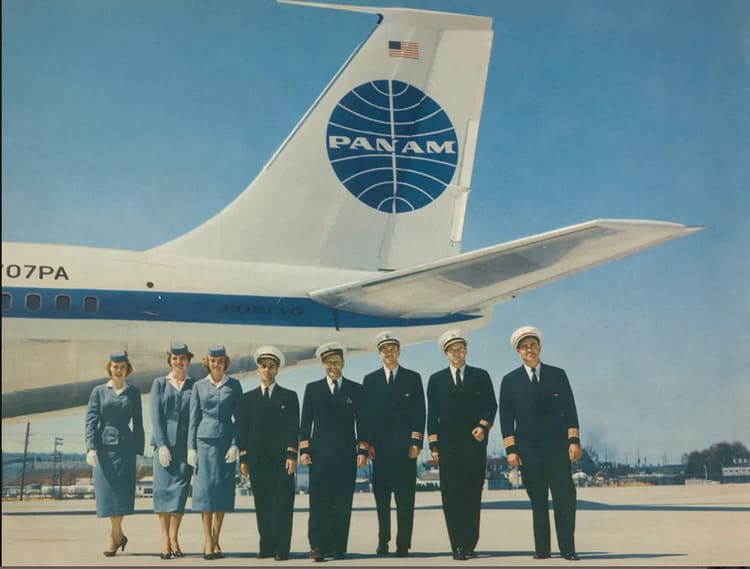
Pan Am wasn’t just an airline; it was the airline.
Founded in 1927, it became the gold standard for international travel. Think of those famous blue globe logos, luxurious flights, and being the first to introduce the Boeing 747—Pan Am defined the glamour of the jet age.
But as big as Pan Am’s ambitions were, its challenges were even bigger. For starters, it focused heavily on international routes and never really built a strong domestic network. That might not sound like a big deal, but when competition heated up after deregulation—when free-market competition was introduced—in 1978, Pan Am struggled to keep up
The nail in the coffin? Bad decisions and worse luck. Buying National Airlines in 1980 to gain domestic routes drained its finances. Then came the oil crisis, rising fuel prices, and the tragic Lockerbie bombing in 1988. By 1991, Pan Am was grounded for good.
Even though it’s gone, Pan Am remains a symbol of aviation’s golden age—a reminder of what flying used to be.
2. Eastern Airlines

If you were flying along the East Coast back in the day, chances are you flew Eastern Airlines. Founded in 1926, it dominated the skies with a massive domestic network and a reputation for reliability.
So, what went wrong? A lot.
For one, Eastern was constantly battling with its unions. Strikes and labor disputes became so frequent they might as well have been part of the schedule. Add to that outdated planes that guzzled fuel and rising oil prices, and the costs started piling up.
But perhaps the biggest blow came in the 1980s when Eastern was taken over by Frank Lorenzo. Let’s just say Lorenzo’s cost-cutting approach didn’t win any fans among employees or passengers. By 1991, after years of turmoil, Eastern folded.
Eastern’s story is a cautionary tale of how even the biggest airlines can’t survive mismanagement and mounting pressures.
3. TWA
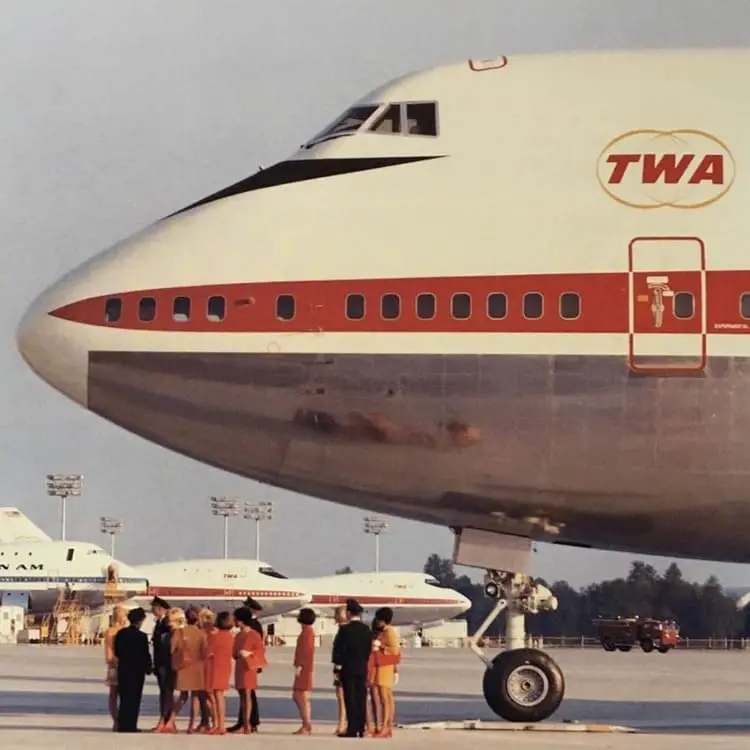
TWA, or Trans World Airlines, was once one of the most glamorous ways to fly. Founded in 1930, it became famous for its transatlantic routes and sleek, modern branding. For years, TWA was neck and neck with Pan Am in defining the high life of air travel.
But TWA’s story took a sharp nosedive.
First, it racked up massive debt trying to expand. Then, in the 1980s, corporate raider Carl Icahn bought the airline. His strategy? Sell off TWA’s valuable assets—like prime international routes—to pay off debts. It was like watching someone strip a beautiful car for parts.
Without its most profitable routes, TWA limped along until 2001, when it was finally acquired by American Airlines. While its name disappeared, TWA remains a fond memory for anyone lucky enough to fly it during its heyday.
4. Braniff International
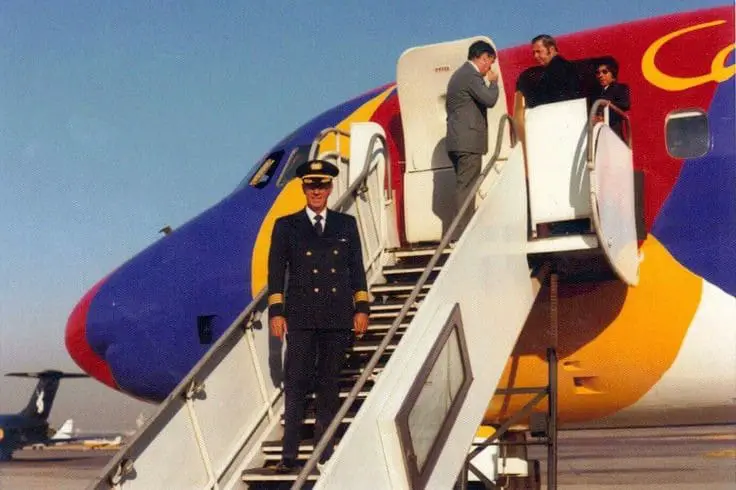
If there was an award for the most colorful airline, Braniff would win hands down. Founded in 1928, Braniff was all about standing out—from its bright, rainbow-colored planes to collaborations with designers like Halston and Alexander Calder. Flying Braniff wasn’t just travel; it was an experience.
But being bold doesn’t always pay the bills. Braniff expanded too quickly, buying too many planes and opening too many routes. When fuel prices skyrocketed in the 1970s, Braniff’s debt became unmanageable.
Then came deregulation, which forced Braniff to lower its fares to compete, further cutting into profits.
By 1982, Braniff filed for bankruptcy, and its brightly painted planes were grounded for good.
5. PSA
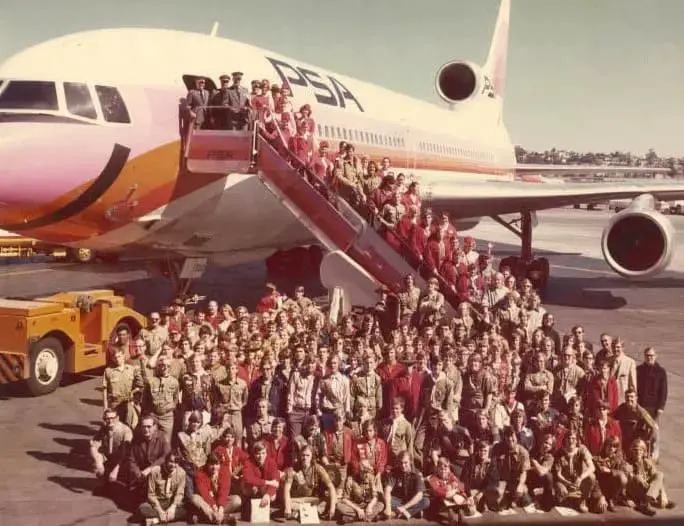
Pacific Southwest Airlines (PSA) was the pride of California. Known for its iconic smile-painted planes and budget-friendly fares, PSA made flying fun and accessible.
Known for its colorful uniforms and cheerful service, PSA brought a sense of fun to the skies, making it a pioneer in accessible, short-haul flights on the West Coast.
Due to increasing competition in the airline industry, PSA ceased operations in 1988 after being acquired by USAir, which later became US Airways.
The merger allowed USAir to expand into the West Coast market, but it marked the end of PSA’s unique branding and joyful flying experience.
Despite its disappearance, PSA remains a cherished icon of aviation history, remembered for making flying both fun and affordable.
6. Hooters Air
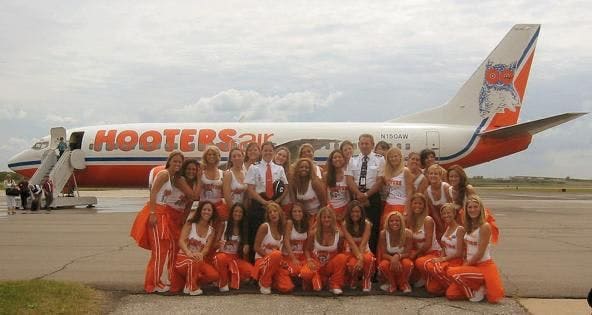
Yes, this was a real airline! Hooters Air launched in 2003, bringing the branding of the famous restaurant chain to the skies.
While it gained attention for its novelty factor—Hooters Girls served as in-flight hosts—the concept didn’t translate into sustained success.
With rising fuel costs, intense competition, and limited demand for its niche service, Hooters Air shut down in 2006.
Despite its short run, the airline remains a quirky and memorable chapter in aviation history, known for blending fun with flying in an entirely unique way.
7. Continental Airlines
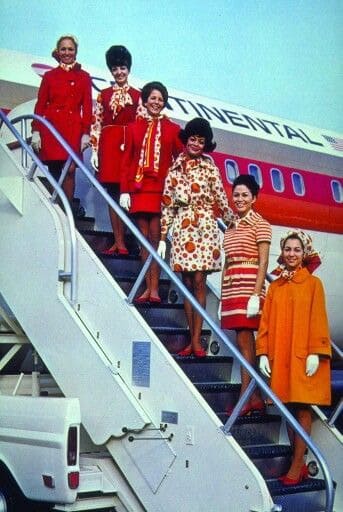
Continental Airlines was a big name in U.S. air travel for decades, known for reliable service and a strong network of domestic and international routes.
Founded in 1934, it was also an innovator, introducing things like seatback entertainment and loyalty programs that many travelers loved.
But the airline hit some rough patches along the way. In the 1980s and early 1990s, Continental filed for bankruptcy twice due to financial struggles.
Things turned around when CEO Gordon Bethune stepped in, making the airline profitable and earning it a reputation as one of the best-run carriers in the business.
In 2010, as airlines began merging to stay competitive, Continental joined forces with United Airlines to form one of the largest airlines in the world.
While the name “Continental” is gone, its influence lives on in United’s customer service and operations, shaped by Bethune’s legacy.
8. Northwest Airlines
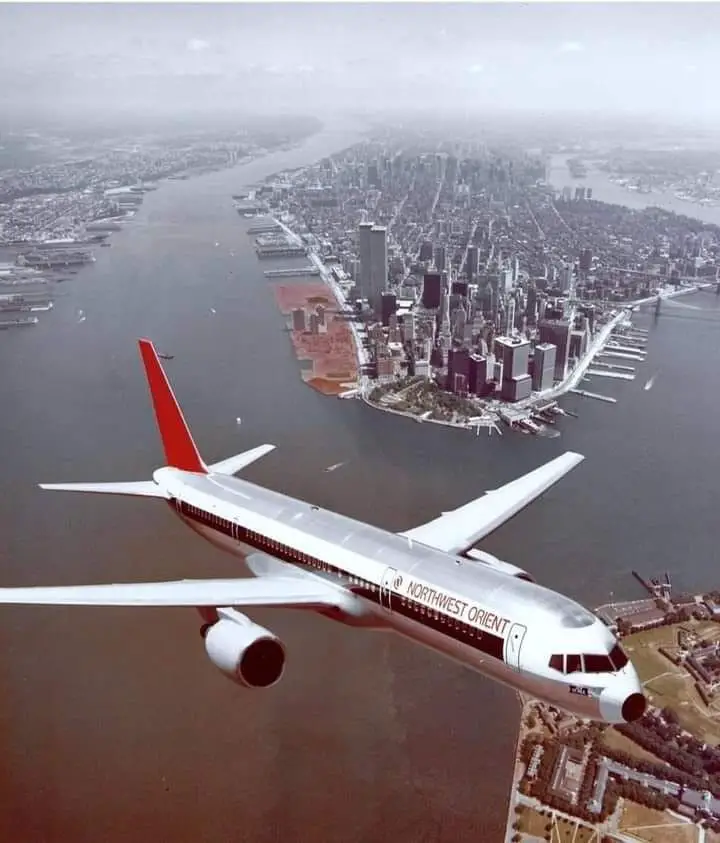
Northwest Airlines was another major player in American aviation, especially for international travel.
Founded in 1926, Northwest was a pioneer in routes to Asia, becoming one of the first U.S. airlines to connect America to cities like Tokyo and Shanghai.
The airline also had a strong domestic presence, particularly in the Midwest.
However, Northwest struggled with rising fuel prices, labor disputes, and increasing competition. It filed for bankruptcy in 2005, emerging leaner but still vulnerable.
In 2008, Northwest merged with Delta Air Lines in what was one of the largest airline mergers of the time.
The combined airline retained Delta’s branding, but Northwest’s influence is still evident in Delta’s robust international network.
9. National Airlines

National Airlines was a Florida-based airline that soared onto the scene in 1934.
Based in sunny Florida, it grew from a small regional carrier to a major airline connecting Miami, New York, and Los Angeles. Known for its iconic “Sun King” logo and catchy “Fly Me” ads featuring its flight attendants, National had a fun, glamorous vibe that made it a favorite for travelers.
By the late 1970s, though, rising competition and financial pressures made it hard for National to keep up. In 1980, it was bought by Pan Am, which took over its routes and operations.
While the airline is no longer around, it’s fondly remembered for its bold personality and its role in shaping U.S. aviation.
What Happened to These Airlines?
So why did these airlines disappear? Here’s the short version:
- Deregulation: The Airline Deregulation Act of 1978 introduced free-market competition, which was great for passengers (hello, cheaper fares!) but brutal for airlines that weren’t prepared to adapt.
- Economic Challenges: Fuel crises, recessions, and rising operating costs created financial strain.
- Mismanagement: Poor leadership decisions, overexpansion, and labor disputes weakened even the strongest brands.
- Mergers and Consolidation: Many airlines were absorbed into larger carriers, erasing their unique identities.
The End of an Era, but Not the Legacy
The disappearance of iconic airlines like Pan Am, TWA, Eastern, and others marked the end of aviation’s golden age.
These airlines weren’t just companies—they symbolized a time when flying was elegant, exciting, and full of promise.
Yet, their stories aren’t just about decline. They shaped the aviation industry we know today, pioneering innovations like jet service, loyalty programs, and the very idea of global connectivity.
Though they couldn’t withstand the challenges of deregulation, economic pressures, and changing consumer demands, their legacy lives on. Their influence is still felt in the skies every time we fly. ✈️
Those were the good days when one felt wonderful about raveling with a top class airline
Nice precise,knowledgeable. Yes the owners greed did many of us in. Sad but true the owners/buyers of our wonderful airlines were not aviators.